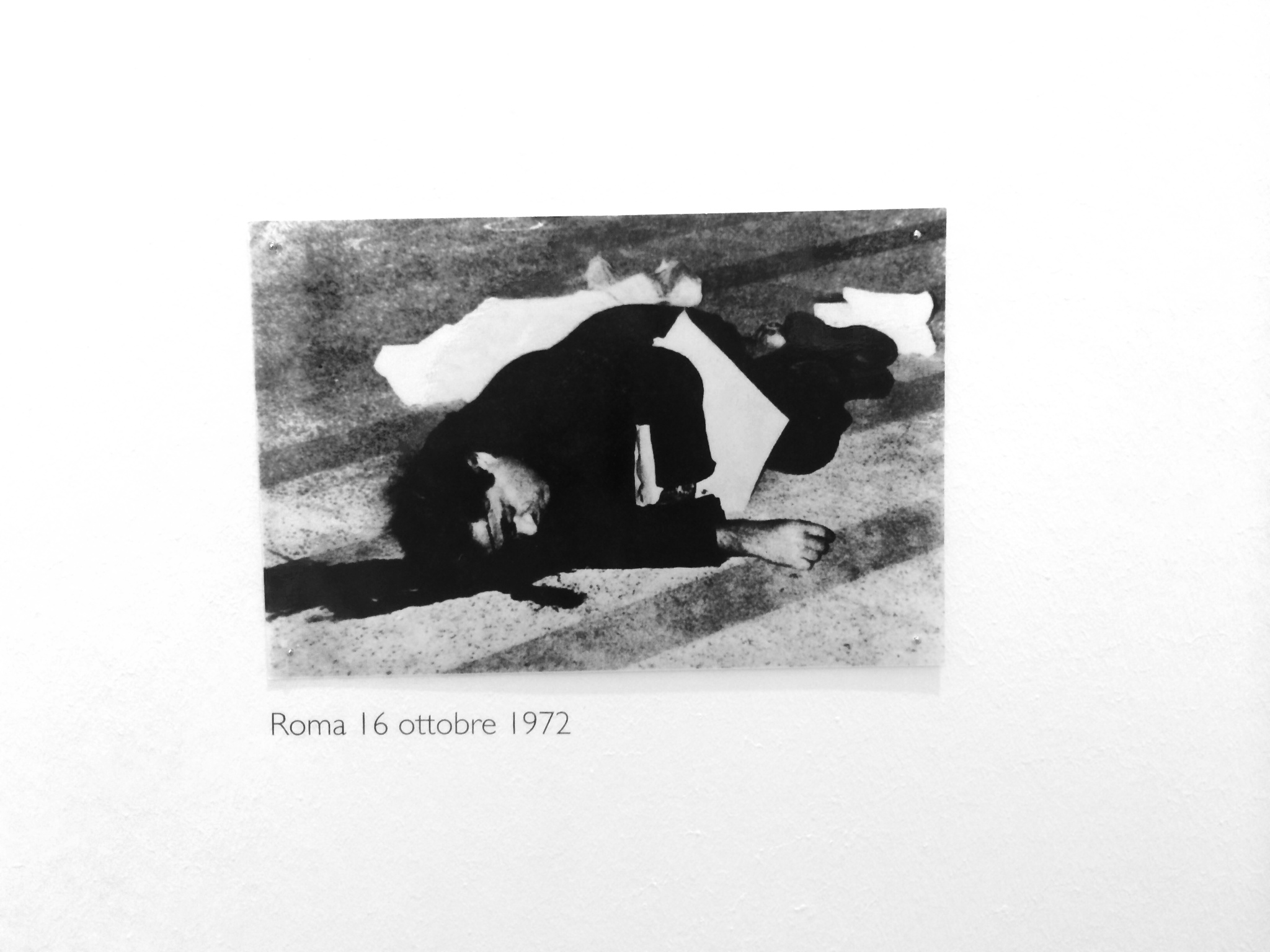Chris Marker, Stopover In Dubai, (2011)
“[Chris Marker’s] late short video Stopover in Dubai is the most minimal effective gesture: it’s the film produced by the Dubai State Security service, of found CCTV footage tracking the assassins on their way to kill Mahmoud al-Mabhouh in his hotel room. All Marker has done is change the soundtrack, adding the first three movements of Henryk Górecki’s ‘String Quartet No. 3’: the dark adagio as the team assembles, drifting in and out of shopping centres; the profound gloom of the second movement, as the circle inexorably closes and the doomed man goes to his hotel room under the watchful eye of the surveillance group; and the escalating frenzy of the allegro as the work is done and the killers scatter.” From Chris Marker’s obituary in Radical Philosophy November/December 2012.
Emily Jacir Europa at Whitechapel Gallery
“Winner of a Golden Lion at the 2007 Venice Biennale, Material for a film (2004–ongoing) is a large-scale, immersive installation based on the life of Palestinian writer Wael Zuaiter who was assassinated near his home in Rome by Israeli Mossad agents in 1972. Jacir reimagines chapters of Zuaiter’s life through materials unearthed by the artist including family photographs, correspondence and documents relating to his death.” From the catalogue accompanying Emily Jacir’s solo exhibition at Whitechapel Gallery, London.
 “Wael Zwaiter / وائل زعيتر ( 2 January 1934 – 16 October 1972) was a Palestinian translator assassinated as the first target of Israel’s Operation Wrath of God campaign following the 1972 massacre at the Munich Olympics. Israel considered Zwaiter a terrorist for his role in the Black September Group, while his supporters argue that he was “never conclusively linked” with Black September or the Munich massacre and was killed in retribution…[more here]” Courtesy of Wikipedia.
“Wael Zwaiter / وائل زعيتر ( 2 January 1934 – 16 October 1972) was a Palestinian translator assassinated as the first target of Israel’s Operation Wrath of God campaign following the 1972 massacre at the Munich Olympics. Israel considered Zwaiter a terrorist for his role in the Black September Group, while his supporters argue that he was “never conclusively linked” with Black September or the Munich massacre and was killed in retribution…[more here]” Courtesy of Wikipedia.
Eric Baudelaire, The Anabasis of May and Fusako Shigenobu, Masao Adachi and 27 years without images, (2011)
Trailer for Eric Baudelaire‘s film The Anabasis of May and Fusako Shigenobu, Masao Adachi and 27 Years without Images (2011)
“Who are May and Fusako Shigenobu? Fusako — leader of an extremist left-wing faction, the Japanese Red Army, involved in a number of terrorist operations — has been in hiding in Beirut for almost 30 years. May, her daughter, born in Lebanon, only discovered Japan at the age of twenty-seven, after her mother’s arrest in 2000. And Masao Adachi? A screenwriter and radical activist filmmaker, committed to armed struggle and the Palestinian cause, was also underground in Lebanon for several decades before being sent back to his native country. In his years as a film director, he had been one of the instigators of a ‘theory of landscape’ — fukeiron: through filming landscapes, Adachi sought to reveal the structures of oppression that underpin and perpetuate the political system. Anabasis? The name given, since Xenophon, to wandering, circuitous homeward journeys.
“It is this complicated, dark, and always suspenseful story that Eric Baudelaire — an artist renowned for using photography as a means of questioning the staging of reality — chose to bring forth using the documentary format. Filmed on Super 8 mm, and in the manner of fukeiron, contemporary panoramas of Tokyo and Beirut are blended in with archival footage, TV clips and film excerpts as backdrop for May and Adachi’s voices and memories. They speak of everyday life, of being a little girl in hiding, of exile, politics and cinema, and their fascinating overlap. All of which adds up not so much to an enquiry as a fragmented anamnesis.” Jean-Pierre Rehm (from the FID Marseille catalog).
The film is accompanied by a fascinating publication that’s available for free here from ISSUU (courtesy of Eric).
Jumana Manna – A magical substance flows into me (2015)
 Courtesy Chisenhale and Jumana Manna
Courtesy Chisenhale and Jumana Manna
Jumana’s wonderful, inspiring, important new film forms the centrepiece of her first UK solo exhibition at Chisenhale, London. The exhibition guide includes an Katie Guggenheim, Exhibitions and Events curator at Chisenhale, interviewing Jumana.
The interview can be downloaded from the Chisenhale website here.
On your way back from, or on your way to, Chisenhale don’t forget to visit Emily Jacir’s exhibition at Whitechapel Gallery:
